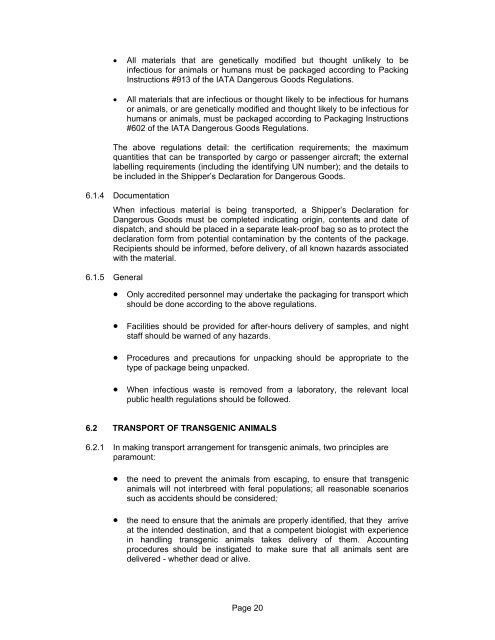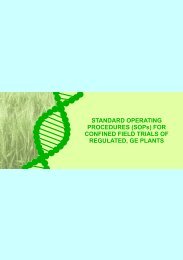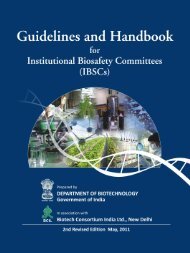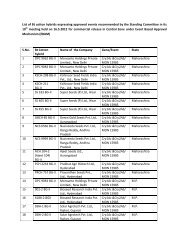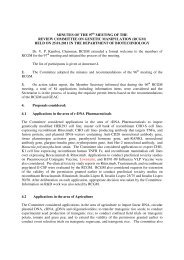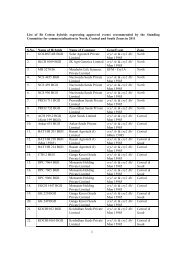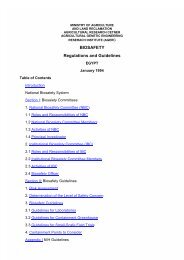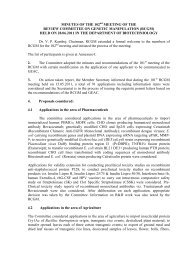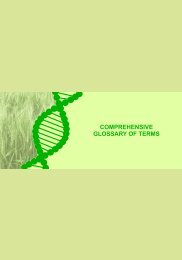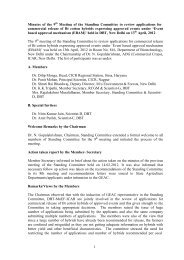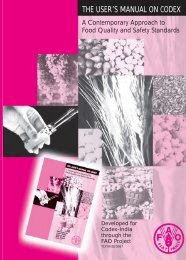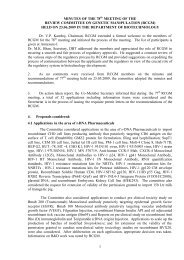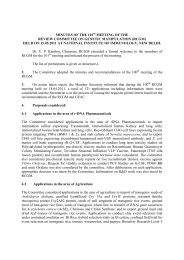Biosafety Guidelines For Research On Genetically Modified ...
Biosafety Guidelines For Research On Genetically Modified ...
Biosafety Guidelines For Research On Genetically Modified ...
Create successful ePaper yourself
Turn your PDF publications into a flip-book with our unique Google optimized e-Paper software.
• All materials that are genetically modified but thought unlikely to be<br />
infectious for animals or humans must be packaged according to Packing<br />
Instructions #913 of the IATA Dangerous Goods Regulations.<br />
• All materials that are infectious or thought likely to be infectious for humans<br />
or animals, or are genetically modified and thought likely to be infectious for<br />
humans or animals, must be packaged according to Packaging Instructions<br />
#602 of the IATA Dangerous Goods Regulations.<br />
The above regulations detail: the certification requirements; the maximum<br />
quantities that can be transported by cargo or passenger aircraft; the external<br />
labelling requirements (including the identifying UN number); and the details to<br />
be included in the Shipper’s Declaration for Dangerous Goods.<br />
6.1.4 Documentation<br />
When infectious material is being transported, a Shipper’s Declaration for<br />
Dangerous Goods must be completed indicating origin, contents and date of<br />
dispatch, and should be placed in a separate leak-proof bag so as to protect the<br />
declaration form from potential contamination by the contents of the package.<br />
Recipients should be informed, before delivery, of all known hazards associated<br />
with the material.<br />
6.1.5 General<br />
• <strong>On</strong>ly accredited personnel may undertake the packaging for transport which<br />
should be done according to the above regulations.<br />
• Facilities should be provided for after-hours delivery of samples, and night<br />
staff should be warned of any hazards.<br />
• Procedures and precautions for unpacking should be appropriate to the<br />
type of package being unpacked.<br />
• When infectious waste is removed from a laboratory, the relevant local<br />
public health regulations should be followed.<br />
6.2 TRANSPORT OF TRANSGENIC ANIMALS<br />
6.2.1 In making transport arrangement for transgenic animals, two principles are<br />
paramount:<br />
• the need to prevent the animals from escaping, to ensure that transgenic<br />
animals will not interbreed with feral populations; all reasonable scenarios<br />
such as accidents should be considered;<br />
• the need to ensure that the animals are properly identified, that they arrive<br />
at the intended destination, and that a competent biologist with experience<br />
in handling transgenic animals takes delivery of them. Accounting<br />
procedures should be instigated to make sure that all animals sent are<br />
delivered - whether dead or alive.<br />
Page 20


